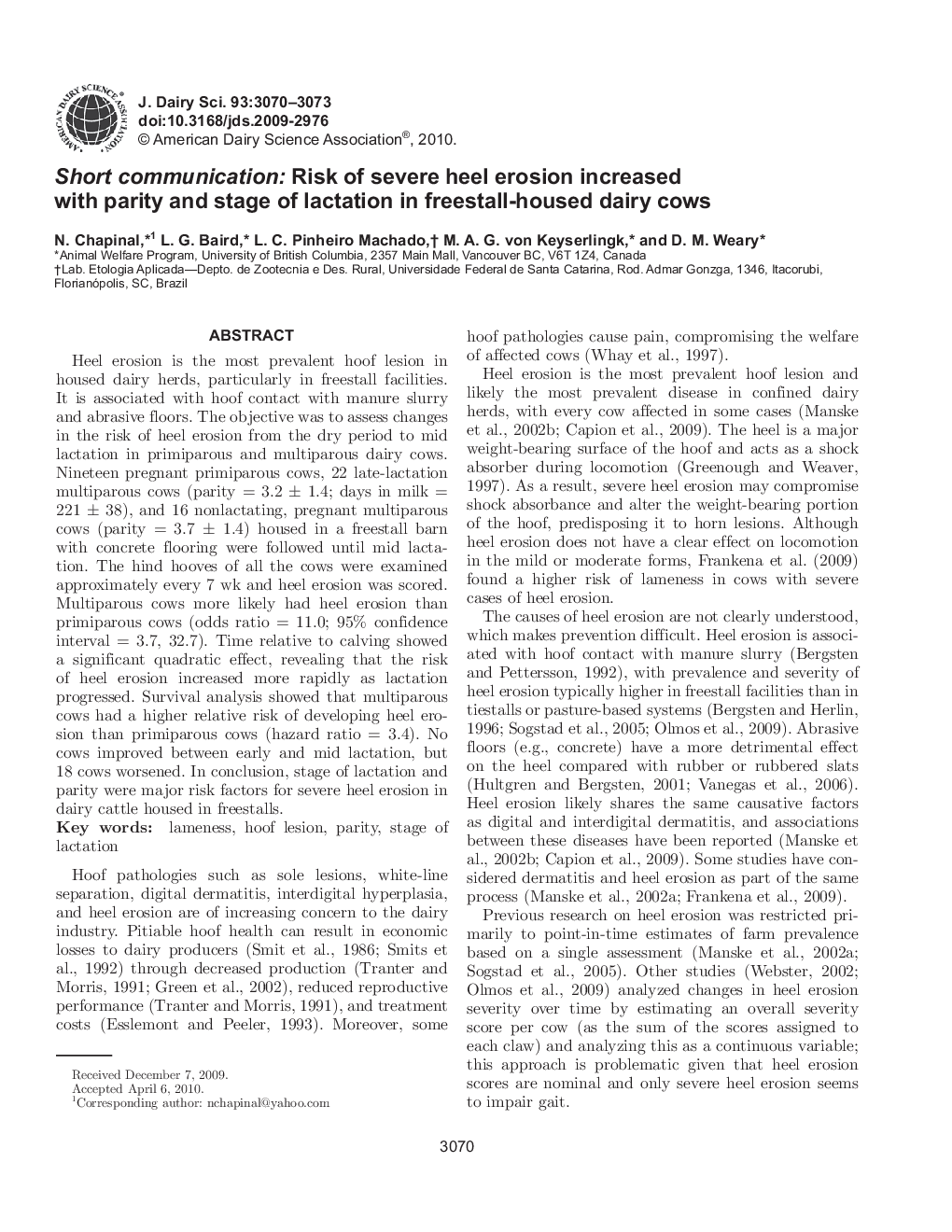| Article ID | Journal | Published Year | Pages | File Type |
|---|---|---|---|---|
| 10981536 | Journal of Dairy Science | 2010 | 4 Pages |
Abstract
Heel erosion is the most prevalent hoof lesion in housed dairy herds, particularly in freestall facilities. It is associated with hoof contact with manure slurry and abrasive floors. The objective was to assess changes in the risk of heel erosion from the dry period to mid lactation in primiparous and multiparous dairy cows. Nineteen pregnant primiparous cows, 22 late-lactation multiparous cows (parity = 3.2 ± 1.4; days in milk = 221 ± 38), and 16 nonlactating, pregnant multiparous cows (parity = 3.7 ± 1.4) housed in a freestall barn with concrete flooring were followed until mid lactation. The hind hooves of all the cows were examined approximately every 7 wk and heel erosion was scored. Multiparous cows more likely had heel erosion than primiparous cows (odds ratio = 11.0; 95% confidence interval = 3.7, 32.7). Time relative to calving showed a significant quadratic effect, revealing that the risk of heel erosion increased more rapidly as lactation progressed. Survival analysis showed that multiparous cows had a higher relative risk of developing heel erosion than primiparous cows (hazard ratio = 3.4). No cows improved between early and mid lactation, but 18 cows worsened. In conclusion, stage of lactation and parity were major risk factors for severe heel erosion in dairy cattle housed in freestalls.
Related Topics
Life Sciences
Agricultural and Biological Sciences
Animal Science and Zoology
Authors
N. Chapinal, L.G. Baird, L.C. Pinheiro Machado, M.A.G. von Keyserlingk, D.M. Weary,
